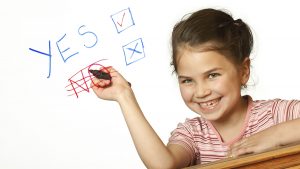What about the exophores?
While esophoria and myopia have a long-associated link,(1-3) exophoria must also be on our myopia management agenda. The punchline, up front – research has shown that of kids with intermittent exotropia, 50% are myopic by age 10 and 90% are myopic by age 20,(4) and we need to be extra wary if considering fitting a myopic child like this into contact lenses.

















